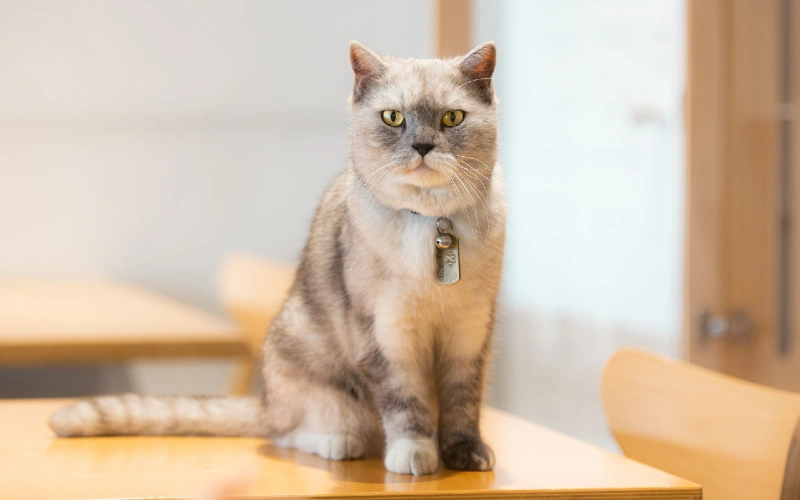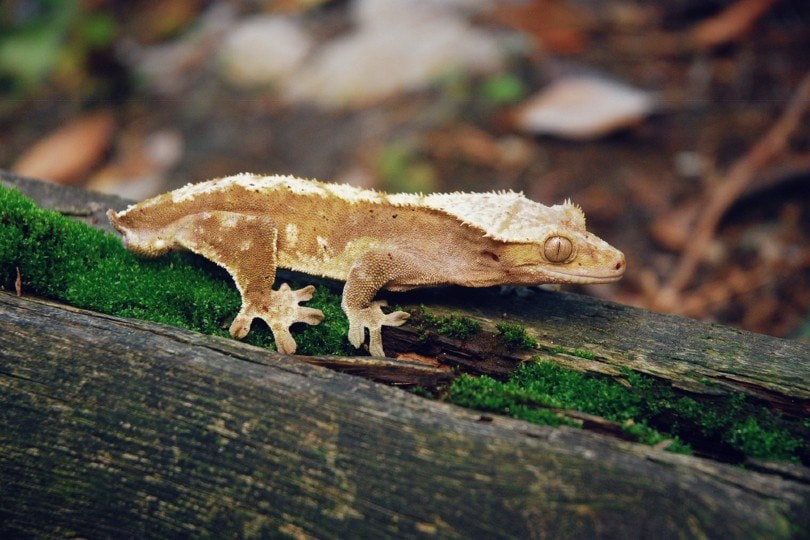VET APPROVED

The information is current and up-to-date in accordance with the latest veterinarian research.
Learn more »Click to Skip Ahead
British Shorthair cats are a chubby-cheeked pure breed originating from the United Kingdom. They don’t have many health problems, but they can be prone to minor issues impacting their longevity. But exactly how long do British Shorthairs live? Do they live longer than other breeds? Read further to find out the answers to these questions and more.

What’s the Average Lifespan of a British Shorthair?
British Shorthairs can live for 14–20 years, which is fairly long-lived for cats. However, the average age a British Shorthair reaches is 11.8–12.5 years, and a study in Sweden found that around 85% of British Shorthairs lived beyond ten years of age,1 and 54% exceeded 12.5 years.

Why Do Some British Shorthairs Live Longer Than Others?
1. Nutrition
Cats need a different diet than dogs. They are obligate carnivores, must eat meat to survive, and can’t effectively digest plant material. British Shorthairs need high-quality protein and need to eat more protein and fat.
Cats also can’t synthesize some amino acids, vitamins, and fatty acids that are essential to their survival, so they need to absorb them through their diet:
- Taurine: Taurine is one of the most well-known feline dietary requirements. Cats need the amino acid in large quantities, and it’s only found in the meat of other animals. Cats can’t synthesize taurine in their bodies, but it’s critical for their survival. Without taurine, a British Shorthair (or any cat) can’t live very long.
A taurine deficiency can cause the retinal cells in a cat’s eyes to degenerate, impairing vision and eventually causing blindness. This is known as taurine retinopathy. A lack of taurine also can weaken the heart, causing it to enlarge (dilated cardiomyopathy). This eventually leads to congestive heart failure, giving a cat a lifespan of only a few months.
- Arginine: Arginine is another essential element of a cat’s diet that directly affects longevity. Arginine helps construct enzymes that break down the waste product ammonia. If a cat is not taking in enough arginine, ammonia will build up in their blood and cause devastating damage to organs, resulting in death in as little as 24 hours.
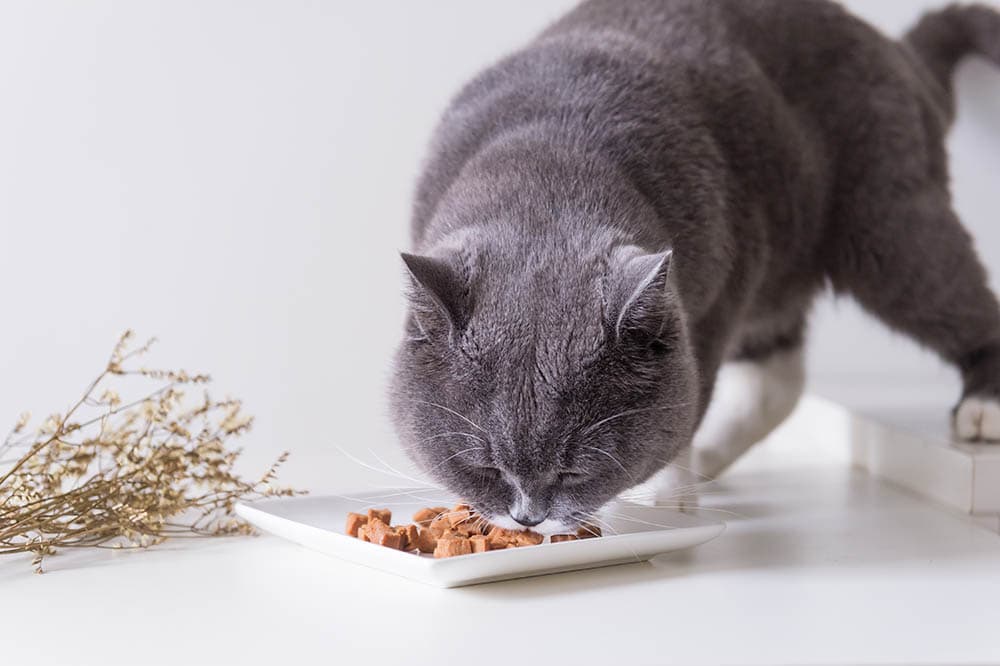
2. Environment and Conditions
If British Shorthairs live in close quarters with many other cats, they’re at increased risk of contracting diseases that can decrease their lifespan. Contagious respiratory infections like
Calicivirus and feline infectious peritonitis can be particularly dangerous and fatal to kittens, older cats, and cats with immunodeficiencies. Stressful households can also cause decreased lifespans, as stress directly affects several body systems.
3. Indoor/Outdoor Living
It has been proven in studies that indoor cats live much longer lives than outdoor cats. Indoor cats are at a reduced risk of exposure to disease, are kept away from predators, are less likely to come into contact with toxic substances, and are less likely to be injured (such as by a car). Indoor-only British Shorthairs typically live for 10 years or more, while outdoor British Shorthairs live for an average of only 2 to 5 years.
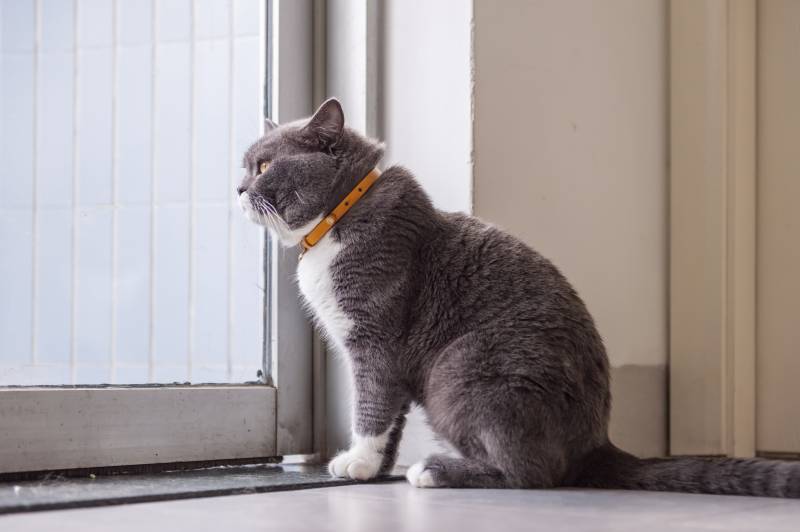
4. Sex
Female British Shorthairs tend to live longer than males. Other animals have this difference in lifespan, which science thinks could be due to females of a species having two X chromosomes compared to a male’s XY. This could protect the females from gene mutations that reduce their lifespan. Males fight for mates and dominance, which can cause injuries and infections that reduce lifespans.
5. Genes
British Shorthairs, as a breed, are relatively healthy, but they can suffer from some inherited¹ conditions:
- Hypertrophic Cardiomyopathy (HCM): HCM is caused by an enlarged heart muscle that can’t pump properly and causes congestive heart failure.
- Polycystic Kidney Disease: This condition causes cysts or fluid-filled holes to appear on the kidneys and other organs, reducing their function and eventually causing kidney failure.
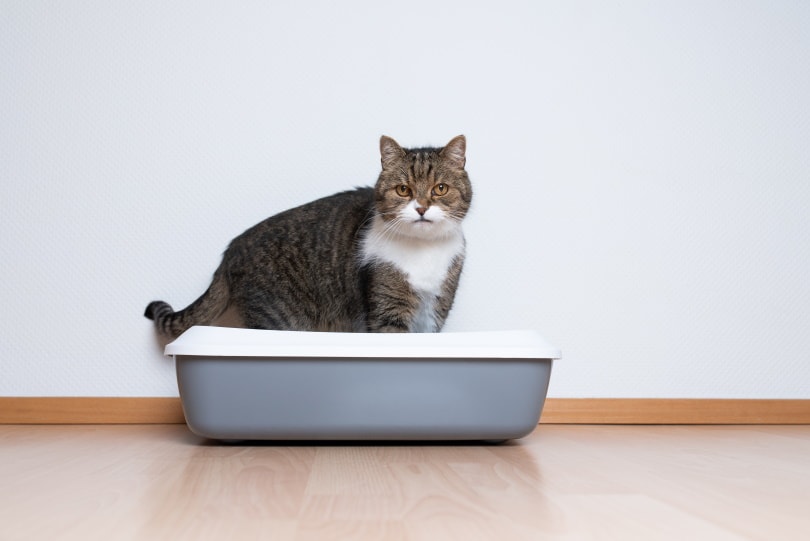
6. Breeding History and Neutering Status
Neutered British Shorthairs typically live longer than unneutered cats. This is for multiple reasons:
- There is less chance of cats straying (particularly males), reducing their territory and making them less likely to fight or be injured away from home.
- Prevents pregnancy, which presents dangers such as dystocia (problems giving birth), healing issues from the birth, and malnutrition when raising the kittens.
- Reduces the chance of mammary or testicular cancers.
- Prevents a dangerous womb infection known as pyometra and subsequent sepsis.

The 6 Life Stages of a British Shorthair
1. Kitten
From birth to 6 months old:
British Shorthair kittens will do most of their growth in this period and learn to use all their senses. They are born deaf, blind, and defenseless, so they rely entirely on their mothers.
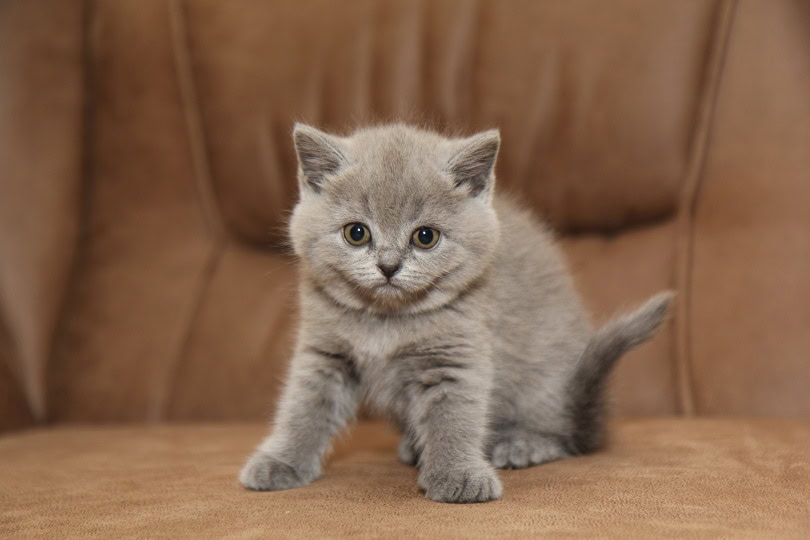
2. Young Adult
From 7 months to 2 years:
By now, the kitten has had vaccinations, reached sexual maturity, and has been neutered or spayed. Growth slows down during this time, but British Shorthairs don’t stop growing until they’re 3 years old. Kitten-like behavior is still expected, as most cats’ brains aren’t mature at this stage.
3. Adult
From 3 to 6 years:
British Shorthairs are fully mature at this age, and the growth will stop at around 3 years. Their behavior and personality calm down, and cats at this age are usually settled. However, health problems can arise, including the onset of obesity, bladder problems, and dental disease.
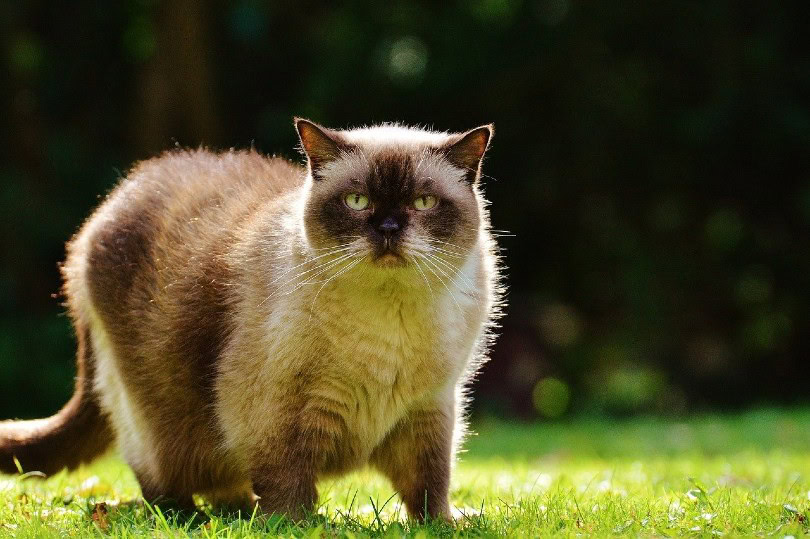
4. Mature Adult
From 7 to 10 years:
While still healthy, most British Shorthairs begin to slow down during this stage, particularly toward the end. Therefore, keeping an eye out for health conditions that can occur as cats age, including hyperthyroidism and kidney disease, is essential, and weight management during this stage is key to preventing obesity and all the health complications it predisposes cats to.
5. Senior
From 11 to 14 years
British Shorthairs at this age need adjustments to their lifestyle and diet to keep them comfortable. Making sure they have warm spaces to sleep and a senior diet is important, as older cats often have aches and pains that diet and warmth can help remedy. In addition, low-sided litter boxes and other accommodations for arthritis are recommended.
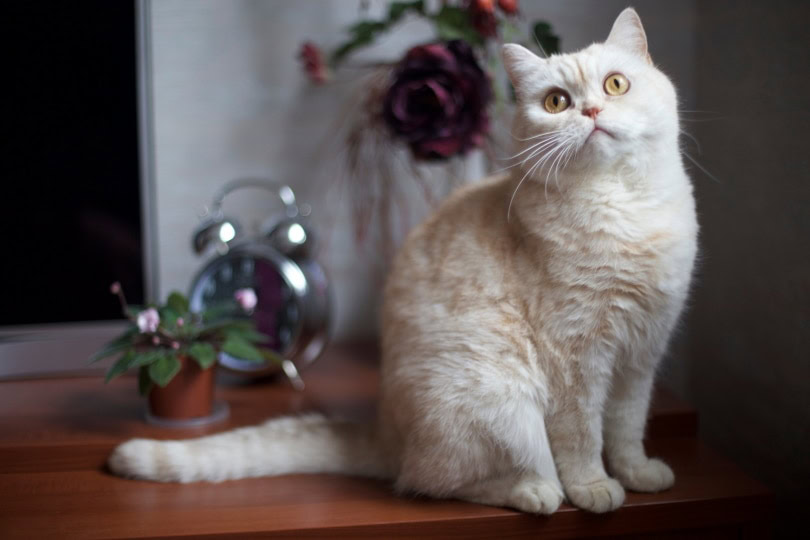
6. Geriatric
From 15 years +:
Signs of senility can occur during this stage, and end-of-life care is usually needed, including keeping your cat comfortable and pain-free.

How to Tell Your British Shorthair’s Age
It can be difficult to tell a cat’s age if they’re adopted or if you’re unsure of their background. The best thing to do is take them to the vet, who will look at a few key markers of age on your cat to give their best approximation:
- Teeth: Cats start to get their deciduous (baby) teeth between 2 and 4 weeks old, so it’s reliable to place them at this age if baby teeth are still present. Tartar, staining, and wear can be indicators a cat is older but only provide a rough estimate.
- Condition: A cat’s coat and overall body condition are useful markers for age, as an older cat will have thicker, more coarse fur, which can become lighter with age. They may also be arthritic if older, have a changed gait, and experience weight loss.
However, if a British Shorthair is pedigree, checking their microchip or papers should tell you their age! A cat’s age in human years is approximately four years for each human year after they reach the age of 3. For example, a 1-year-old cat is 15 in human years, 2 years old equates to 24 human years, and 3 equates to 28 human years. Cats who are 10 years old are 56!
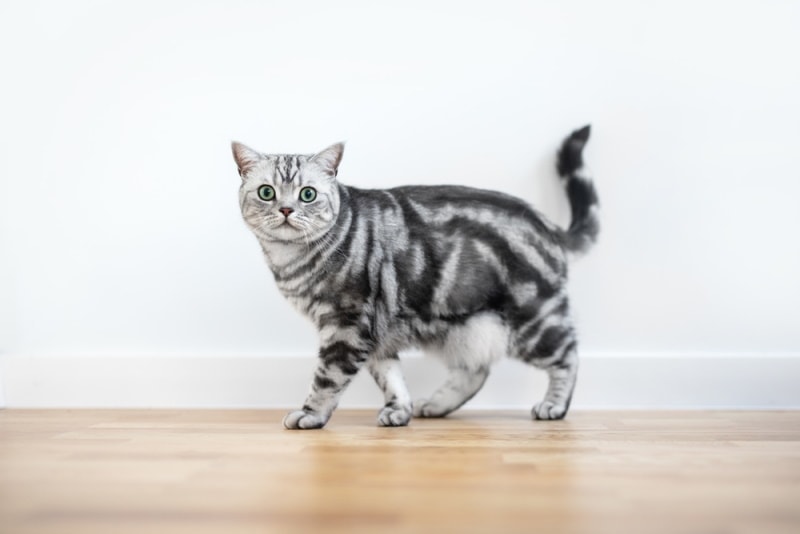

Final Thoughts
British Shorthairs are generally healthy cats with lifespans similar to most pedigree cats. Some cats can live 20 years or more, but the average is around 12. However, indoor British Shorthairs generally live longer than outdoor felines, and keeping them trim and healthy is vital to their longevity.
- https://www.petmd.com/cat/breeds/c_ct_british_shorthair
- https://pubmed.ncbi.nlm.nih.gov/19780926/
- https://www.purinainstitute.com/science-of-nutrition/extending-healthy-life/longevity-study-in-cats#:~:text=A%209%2Dyear%20study%20showed,decreases%20in%20several%20health%20measures.
- https://todaysveterinarynurse.com/nutrition/feline-hypertrophic-cardiomyopathy-and-the-role-of-nutrition/
- https://journals.sagepub.com/doi/10.1177/1098612X13477537
- https://www.thinkingoutsidethecage.org/pet-resources/behavior-help/cat-behavior-solutions/cats-live-longer-healthier-lives-indoors/#:~:text=The%20answer%20is%20clear%20when,that%20freedom%20with%20their%20lives.
- https://royalsocietypublishing.org/doi/10.1098/rsbl.2019.0867
- https://icatcare.org/advice/british-shorthair/
- https://www.humanesociety.org/resources/why-you-should-spayneuter-your-pet#:~:text=Spayed%20female%20cats%20in%20the,an%20increased%20urge%20to%20roam.
- https://vcahospitals.com/know-your-pet/hyperthyroidism-in-cats
- https://www.petmd.com/cat/slideshows/6-tips-determining-your-cats-age
- https://icatcare.org/advice/how-to-tell-your-cats-age-in-human-years/
Featured Image Credit: Songhan Wu, Pexels
